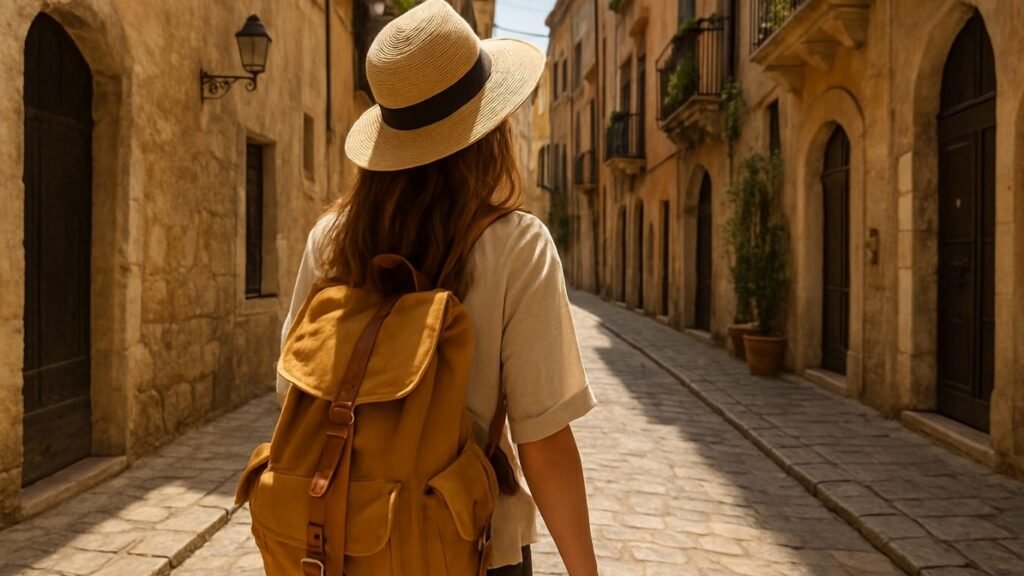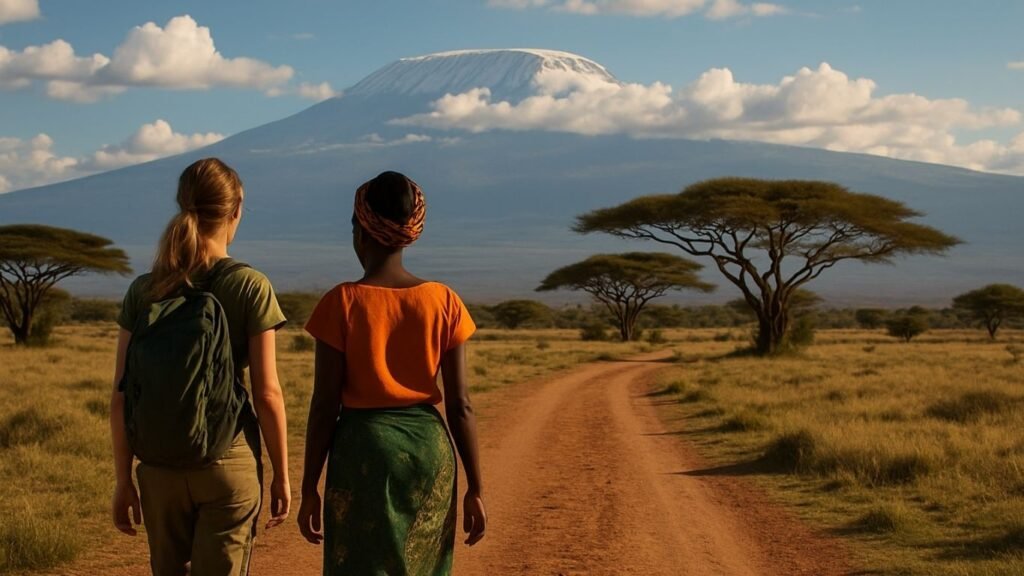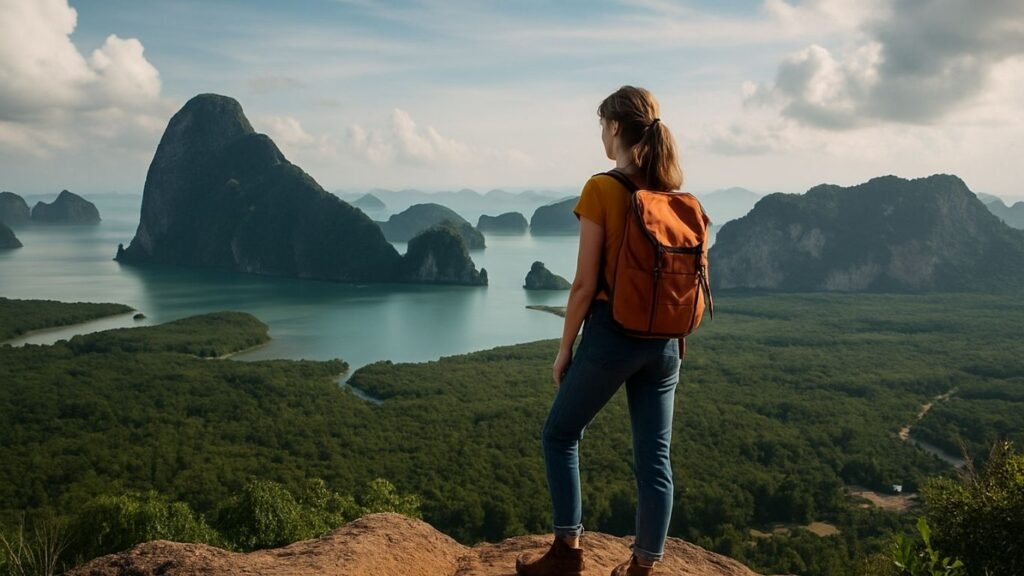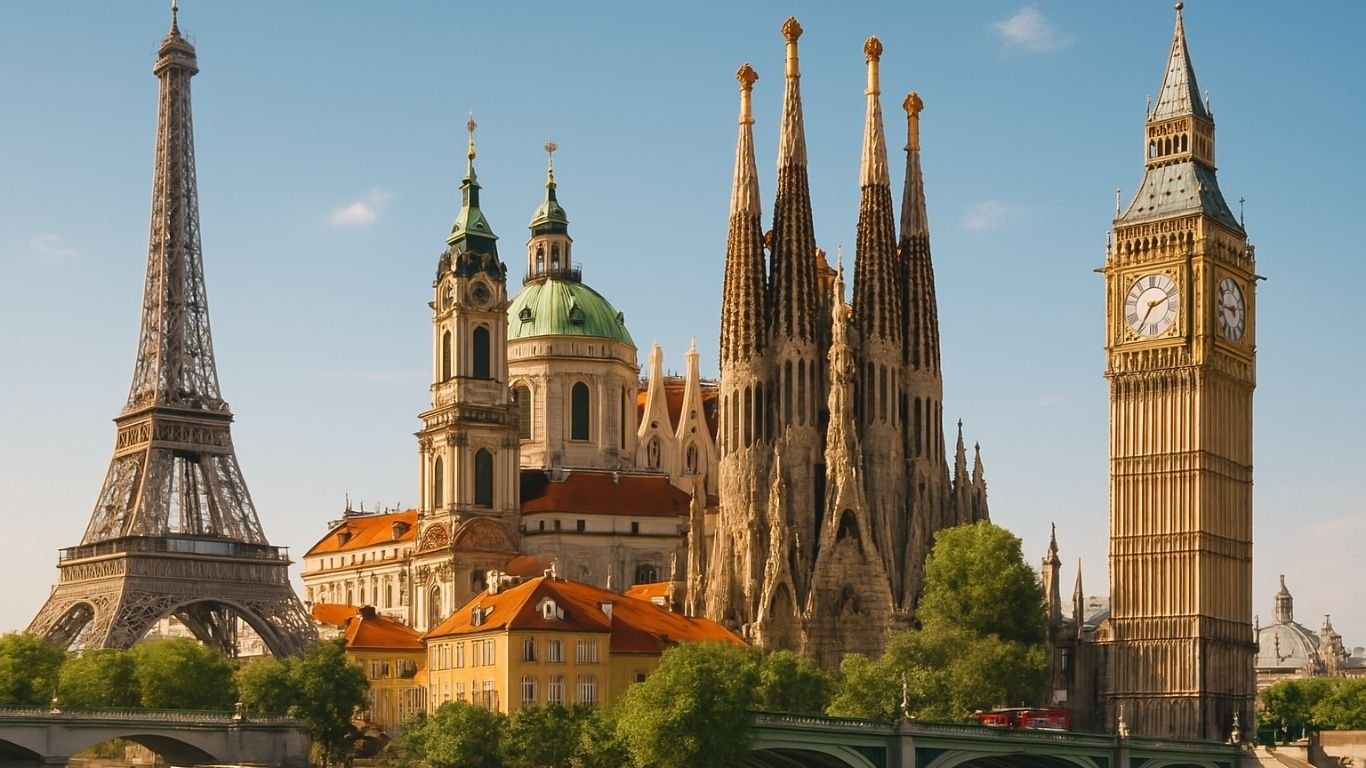Setting out on your very first journey into the wider world is one of life’s most thrilling milestones. It’s a moment brimming with promise—a passport to new cultures, unfamiliar landscapes, and transformative experiences. Yet, the question inevitably arises: how to choose where to go on your first trip? With thousands of destinations spanning the globe, each offering its own allure, narrowing it down can feel as daunting as it is exciting.
Choosing a destination is not just a logistical decision; it is the art of aligning your dreams, practical realities, and aspirations into one unforgettable adventure. According to a 2024 survey by Rustic Pathways, nearly 62% of first-time travelers admitted that uncertainty about where to go was their biggest hurdle in planning their trip.
Choosing well can mean the difference between a trip that feels like a revelation and one that leaves you underwhelmed. The key is intentionality—crafting your journey thoughtfully, so that every aspect resonates with your personal story. This guide will walk you through the ten essential ways to decide where to go on your first trip, weaving together data-backed advice, personal insights, and a touch of storytelling magic.
Let’s embark on this journey of discovery—starting with the first and perhaps most defining question of all.
Table of Contents
1. Consider Which Country You Want to Visit
Choosing the country is the cornerstone of how to choose where to go on your first trip. Your destination sets the tone for everything that follows—the language you’ll hear, the culture you’ll absorb, and the memories you’ll create. It’s essential to start broad before narrowing in.
First, think about your long-held dreams. Have you always imagined walking through the vibrant souks of Morocco? Watching the sunset over Santorini’s whitewashed domes? Trekking through the Peruvian Andes? If so, honor those instincts. Our inner compass often knows the landscapes and cultures that will speak to our soul.
Second, consider practical factors: visa requirements, safety, health risks, and accessibility. The Global Peace Index 2024 ranked Iceland, New Zealand, and Portugal among the safest countries for travelers—great starting points for those who want peace of mind. Websites like Passport Index can also help you quickly assess where your passport allows visa-free travel.
Additionally, language can be a bridge or a barrier. If the idea of navigating a non-English-speaking country feels overwhelming for your first trip, you might lean toward destinations where English is widely spoken, such as Ireland, Singapore, or South Africa.
Personal insight: On my first international trip, I chose Italy—a decision driven purely by emotion and heritage. Though I didn’t speak a word of Italian at the time, the connection I felt to its history and culture outweighed every practical concern. And it paid off—immersing myself fully made every misstep feel like an adventure rather than a frustration.
When thinking about how to choose where to go on your first trip, always return to this guiding question: Where does my heart pull me first? Once you have a few countries in mind, you can layer in the practicalities without losing the magic.

2. Determine the Type of Program You Want
One of the most overlooked aspects of how to choose where to go on your first trip is thinking beyond just the destination—it’s about deciding how you want to experience it. Are you dreaming of a structured journey, like a group tour or volunteer program? Or does the idea of independent exploration thrill you more?
Organized programs can be a safety net for first-time travelers. They offer ready-made itineraries, local guides, and built-in social circles. According to a 2023 survey by the Student Travel Association, nearly 45% of first-time travelers opted for guided programs to ease their initial fears. If you choose this route, you can find everything from cultural immersion trips to adventure tours or environmental conservation projects.
On the other hand, solo travel programs, gap-year experiences, or independent backpacking trips offer unmatched freedom. You control the pace, the schedule, and the depth of your interaction with local life. For those seeking personal growth or testing their adaptability, independent travel can be life-changing.
Personally, for my first extended trip, I chose a hybrid experience: a language immersion course that left weekends free for independent travel. It combined the structure I needed with the adventure I craved—a perfect middle ground.
When thinking about how to choose where to go on your first trip, ask yourself: Do I want my days planned for me, or do I want the freedom (and the challenge) of forging my own path? Your comfort level, personality, and goals should dictate the style of your first journey.
3. Consider the Kind of Landscape You Prefer
The landscape you choose will dramatically shape your experience, making it a crucial factor in how to choose where to go on your first trip. Are you yearning for wide-open beaches, misty mountains, bustling cities, serene countryside, or perhaps the endless golden hues of the desert?
Understanding your connection to different environments can help you pick a destination that resonates on a deeper emotional level. According to a 2023 study published in the Journal of Outdoor Recreation and Tourism, travelers reported significantly higher satisfaction when their destination matched their preferred landscape types.
If you seek relaxation and rejuvenation, coastal destinations like Bali, the Amalfi Coast, or the Greek Islands might beckon. If adventure and exploration ignite your spirit, consider mountainous regions such as Patagonia or the Swiss Alps. If cultural immersion and historic intrigue fascinate you, European cities like Prague or Kyoto’s temple gardens could be perfect.
When I first pondered how to choose where to go on your first trip, I realized how landscapes anchored my dreams. I wasn’t just picking a country—I was envisioning myself there: breathing alpine air, hearing waves crash, or wandering narrow cobblestone alleys. Those daydreams guided me far more than any guidebook ever could.
Ask yourself: What scenes fill my mind when I imagine escaping the everyday? Whether it’s desert dunes, tropical forests, or vibrant cities, your dream landscape is more than a backdrop—it becomes part of your story.

4. Think About the People
People can shape your travel experience just as much as places do. When reflecting on how to choose where to go on your first trip, consider the type of human interactions you seek. After all, meaningful connections—whether fleeting or lasting—often become the highlights of any journey.
Do you crave lively social scenes and vibrant street life, like what you might find in cities such as Barcelona, Bangkok, or Buenos Aires? Or are you drawn to quieter communities, where interactions are more personal and reflective, like in small villages across New Zealand or the countryside of Portugal?
Culture plays a huge role too. In some destinations, like Japan or Scandinavia, people may be reserved but deeply respectful. In others, like Mexico or Brazil, you might find an open-hearted warmth that immediately pulls you in. A 2023 Lonely Planet traveler survey found that 72% of travelers ranked “local friendliness” as one of the top three factors influencing their enjoyment of a destination.
When choosing how to choose where to go on your first trip, ask yourself: Am I energized by bustling crowds, spontaneous conversations, and lively atmospheres—or do I feel more comfortable with slower, deeper exchanges?
Personally, I realized that on my first trip, I needed both. I cherished the solitude of exploring alone during the day but also sought out evening tours and cooking classes where I could easily meet fellow travelers and locals.
The people you meet will color your memories. Choose a destination where the culture of interaction matches your comfort level—and challenges you just enough to grow.
5. Think About Engagement with Wildlife
For many first-time travelers, encounters with wildlife can be among the most magical and transformative experiences. When considering how to choose where to go on your first trip, it’s worth thinking about whether close contact with the natural world is something you seek—or prefer to observe from afar.
Destinations like Costa Rica, South Africa, and Australia are famous for their accessible wildlife experiences, from ethical safaris to rainforest explorations. According to the World Tourism Organization (UNWTO), wildlife tourism accounts for 20–25% of all global tourism, showing just how central nature-based experiences are to many travelers.
However, ethical considerations should guide your choices. Look for experiences that prioritize animal welfare and conservation. Activities that allow you to witness wildlife in their natural habitats, like whale watching in Iceland or gorilla trekking in Rwanda, offer breathtaking encounters without compromising animal dignity.
When I thought about how to choose where to go on your first trip, I realized I wanted a profound connection to nature—but responsibly. I chose a marine conservation snorkeling trip where I could swim alongside sea turtles in their natural habitat, not in captivity. That choice made my journey feel purposeful, not exploitative.
If wildlife engagement matters to you, ask yourself: Do I want to observe majestic animals from a respectful distance, or participate in conservation efforts that leave a positive impact? Your answers will help you align your destination with your values, creating not just memories, but meaningful ones.
6. Align Your Trip with Your Career Interests or Future Plans
Travel isn’t just leisure—it can be a stepping stone toward your future. When considering how to choose where to go on your first trip, think about whether your destination can also serve your academic goals, career ambitions, or personal development.
For example, if you’re studying international relations, visiting major political centers like Brussels or Geneva could offer rich insights. Future marine biologists might seek destinations like the Great Barrier Reef, while aspiring chefs might head to France, Italy, or Thailand to immerse themselves in culinary traditions.
A 2024 report by the Institute of International Education found that 31% of young travelers intentionally chose destinations that complemented their career or educational goals. Strategic travel planning can turn a vacation into an investment in your future.
When reflecting on how to choose where to go on your first trip, ask yourself: Can this destination offer experiences that will enhance my resume, broaden my perspective, or develop skills valuable for my future?
On one of my earliest trips, I chose Japan not only for its beauty but because I was studying East Asian history. Walking through Kyoto’s ancient temples and Hiroshima’s Peace Memorial Park gave real-world context to what I had only read about in books—an education no classroom could replicate.
Choosing a place that aligns with your future doesn’t mean sacrificing fun. It means making your first trip both unforgettable and meaningful, planting seeds that will grow long after you return home.

7. Evaluate Accommodations
While it might seem secondary at first glance, accommodations can dramatically influence the success of your journey. When exploring how to choose where to go on your first trip, you must think carefully about where you’ll rest your head each night.
Your lodging choice can impact your sense of security, your budget, your opportunities to socialize, and even your immersion into local culture. Hostels, for instance, offer affordable prices and a built-in community—perfect for solo travelers looking to make friends. Hotels might offer more privacy and amenities, while homestays and guesthouses provide authentic cultural exchanges.
In 2023, Booking.com reported that 54% of travelers prioritized “unique stays” like boutique hotels, heritage properties, and eco-lodges when choosing where to travel. These choices allowed them to experience their destination in a richer, more personal way.
When considering how to choose where to go on your first trip, ask: What environment will make me feel most comfortable and excited to explore? A charming riad in Morocco’s medina can feel worlds apart from a luxury high-rise in downtown Singapore, even if they’re both “just hotels.”
From personal experience, choosing smaller, locally-owned accommodations made all the difference. In a small guesthouse in Costa Rica, the owner not only offered breakfast but also shared insider tips about secret beaches that never made it into guidebooks. Those serendipitous moments often start right where you stay.
Choose accommodations that support the type of experience you seek—and that match your comfort zone, or gently nudge you just beyond it.
8. Factor in the Amount of Travel Time
One of the most overlooked elements when deciding how to choose where to go on your first trip is travel time. Long-haul flights, multiple layovers, and jet lag can eat into your adventure, leaving you drained rather than energized.
If you only have a week, choosing a destination 15 hours away with a significant time difference may not be the best decision. Instead, shorter-haul trips closer to your home country allow you to maximize your limited time. A 2024 Expedia travel trends report revealed that short-haul international trips increased by 27% among first-time travelers, emphasizing the growing preference for convenience.
On the other hand, if you have several weeks—or better yet, months—at your disposal, flying farther afield makes more sense. Southeast Asia, South America, or Oceania become much more feasible if you aren’t pressed for time.
When weighing how to choose where to go on your first trip, ask yourself: How much time will I spend traveling versus actually experiencing the destination? The goal is to arrive ready to explore, not exhausted from the journey.
Personally, for my first major solo trip, I chose a destination with a direct flight option and a manageable time difference. It allowed me to hit the ground running instead of spending precious days adjusting. That decision meant I could experience every moment fully—from sunrise hikes to late-night food markets—without fighting fatigue.
Your first trip should feel invigorating, not exhausting. Let travel time be a strategic part of your planning, ensuring your energy matches your excitement.
9. Choose a Program Based on Your Experience Level
Experience matters more than you might think when deciding how to choose where to go on your first trip. Selecting a destination or travel program aligned with your current comfort zone—and gently challenging it—is key to creating a positive, confidence-building adventure.
First-time travelers may feel overwhelmed by destinations that demand intense logistical navigation, language skills, or cultural adaptability. For example, exploring Western Europe often presents fewer hurdles for beginners than diving into the chaotic urban landscapes of India or the rugged terrains of rural Mongolia.
Data from the Adventure Travel Trade Association shows that beginner-friendly destinations such as Spain, Portugal, and New Zealand consistently rank among the top picks for first-time travelers.
Programs also vary in their level of difficulty and independence. Some offer 24/7 guidance and support, while others expect travelers to be largely self-sufficient. When thinking about how to choose where to go on your first trip, ask yourself: Am I ready to handle challenges like navigating public transport, overcoming language barriers, or dealing with unexpected changes on my own?
On my first trip, I selected a semi-guided volunteer program in Thailand. It gave me structured support but also pockets of freedom to explore solo. That balance built my confidence without overwhelming me—and made me eager for even bigger adventures afterward.
Choosing a destination that suits your current skill level ensures your first trip leaves you empowered, not frustrated. Growth is inevitable, but it’s best when it comes in manageable, exhilarating steps rather than overwhelming leaps.

10. Consider Your Budget
Perhaps the most practical—and pivotal—aspect of how to choose where to go on your first trip is your budget. Dreams of far-flung islands or bustling metropolises must often be weighed against the financial realities of travel costs.
Budget considerations extend beyond just airfare. Accommodation, food, activities, transportation within the country, visa fees, travel insurance, and even daily expenses like museum entries or tips can quickly add up. According to a 2024 study by Skyscanner, 67% of first-time travelers reported exceeding their initial travel budget by at least 20%.
Destinations vary widely in affordability. For example, Southeast Asia, parts of Central America, and Eastern Europe are renowned for offering rich cultural experiences at a fraction of the cost of Western Europe, Japan, or Australia. Cities like Lisbon, Hanoi, or Oaxaca allow you to stretch your money further without sacrificing depth of experience.
When thinking about how to choose where to go on your first trip, ask yourself: Can I afford to enjoy this destination fully, not just scrape by? Choosing a more affordable place might mean more activities, better accommodations, and fewer financial worries—all of which contribute to a richer, more joyful journey.
From personal experience, setting a realistic, flexible budget saved me immense stress. I factored in “hidden costs” like airport transfers and occasional splurges, and it gave me the freedom to enjoy spontaneous adventures without guilt.
Remember: your first trip should inspire excitement, not anxiety. Selecting a destination aligned with your financial comfort zone ensures your memories are filled with wonder, not worries.
FAQ
How do I decide between multiple destinations?
When learning how to choose where to go on your first trip, it’s common to have a few contenders. Start by ranking them based on your priorities: budget, travel time, language, activities, and emotional pull. Often, one destination will naturally rise to the top when you align it with what matters most to you right now.
Is it better to visit somewhere popular or off-the-beaten-path?
For a first trip, balance is key. While iconic cities offer easier logistics and familiarity, lesser-known spots provide deeper cultural immersion. When thinking about how to choose where to go on your first trip, consider destinations that offer a taste of both—perhaps a well-known city paired with a quieter nearby region.
How much planning should I do before my first trip?
Planning provides structure, but leaving room for spontaneity often leads to the most memorable experiences. Experts suggest booking key elements—accommodations, major transportation, and must-see activities—in advance, while leaving open spaces in your schedule to explore serendipitously.
Should I be worried about safety?
Safety is crucial, but fear shouldn’t dictate your choices. Research travel advisories, register with your embassy if available, and follow common-sense precautions. Understanding how to choose where to go on your first trip means recognizing that preparation and awareness can minimize risks wherever you travel.
How do I overcome the fear of traveling alone?
Fear is natural, especially before your first trip. Start small—choose destinations known for being welcoming and traveler-friendly. Joining short tours, taking local classes, or staying in social accommodations can ease loneliness. Often, confidence grows exponentially after the first few days on the road.
How to plan a trip around the world – National Geographic
